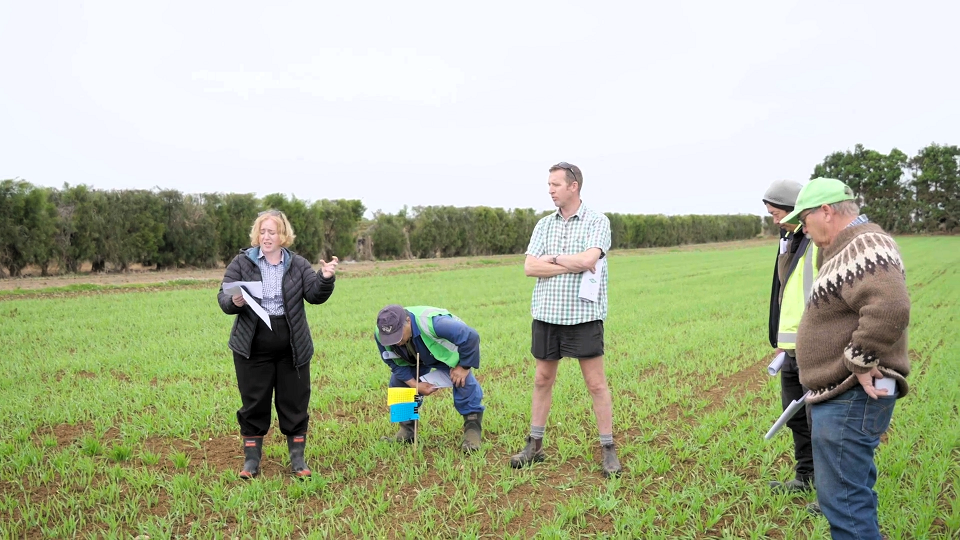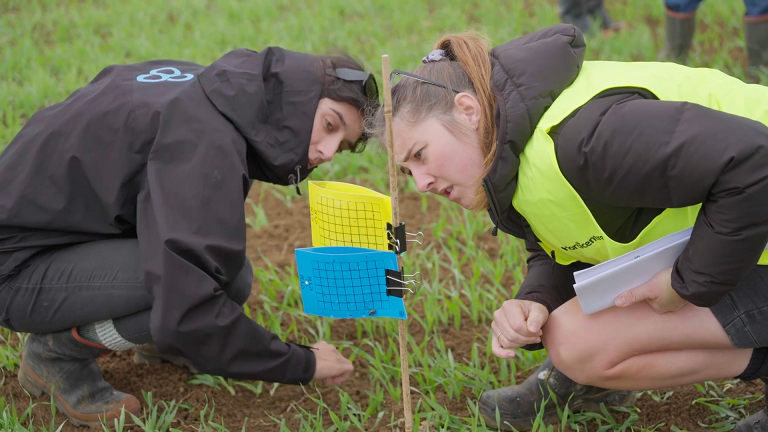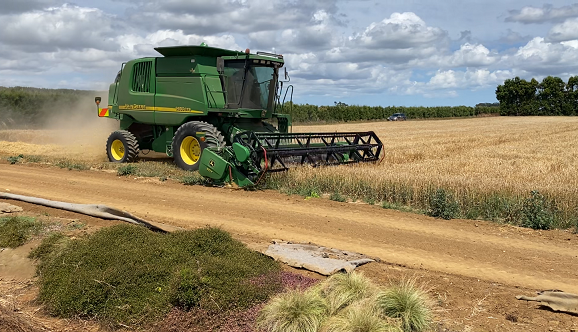A barley crop grown at the Pukekohe Research and Demonstration Farm did not require foliar insecticide application, thanks to beneficial predator and parasitoid species controlling the main crop pest, aphids, which transmit yellow dwarf virus (YDV).
The A Lighter Touch-Foundation for Arable Research project aims to demonstrate to growers that YDV can be managed with an integrated pest management approach. Its three objectives were to evaluate YDV management programmes that have a reduced environmental and economic footprint, to evaluate the use of insecticide seed treatments for aphid control, and to monitor aphid and beneficial predator and parasitoid populations to support uptake of integrated pest management.
Agronomist Andrew Luxmoore managed the spring-planted barley, in what was a good season for the crop, with rain in the early part of the season and warm conditions following. The warmth and humidity of Pukekohe means the region is better suited to later spring sowing.
“Being a vegetable growing region the numbers of aphids can be very high in some places and at certain times of the year. It’s often seasonal but that’s probably the significant differences between us and other growing regions.”

Jo Drummond, of FAR, discusses the IPM approach taken with the barley crop at a field day. Also pictured is agronomist Andrew Luxmoore (centre), who managed the crop.
Given the prevalence of aphids in the region, Andrew says it was very surprising to find no aphids were captured in the demonstration crop throughout the season.
“We had eight sticky traps – four at each end of the paddock – throughout the season, from planting up until heading, and we have not captured a single aphid in this crop which is extremely unusual in my opinion.
“What we have captured is lots of beneficial insects. We’ve captured lots of hoverflies, ladybirds, and predatory wasps of all manner – but not a single aphid.”
The beneficial species found in cereal crops are the same those in many other crops, so supporting beneficial species in one crop can help support them in another.
Andrew specialises in open field crops, particularly potatoes, onions and barley, and has been in the Pukekohe region for more than 15 years.
“Aphids are the main issue here in terms of yellow dwarf virus, which the aphids carry. You need to manage aphids to prevent virus spread.”
At the Pukekohe Research and Demonstration Farm, beneficial species are supported by annual flower strips and perennial native biodiversity plantings. The plantings are part of a wider project demonstrating the pest management benefits of biodiverse planting in vegetable crops. The purpose of the plantings is to provide a continuous source of shelter, nectar, alternative food and pollen to attract and maintain beneficial insect populations, which in turn predate on insect pests in the crops.
“When we’ve been doing sweep net catches and with the sticky traps as well, we’re finding lots and lots of parasitic wasps in particular, but hoverflies as well and ladybirds. They’ve been doing the heavy lifting for us in terms of insect control, which is great,” he says.

Field day attendees study a sticky trap used to monitor insect life in the crop.
FAR cereals senior researcher Jo Drummond says the project was to demonstrate to growers how monitoring and evaluating aphid and beneficial species populations can support IPM uptake and aid decision-making on-farm, particularly through use of tools like Aphid Chat, FAR’s regional aphid monitoring programme. “Let the good guys do the work for you.”
Of the four treatments demonstrated, two were sown as bare seed and two were sown with an insecticide seed treatment. Half the trial followed common practice and received a foliar insecticide application at growth stage (GS 31), the other half was managed using integrated pest management, with decision making based on the ratio of aphids to beneficial species.
Andrew says he would encourage growers to give integrated pest management a go.
“You may need to adapt it to your particular situation, but don’t just say no straight away. It’s about saying, “Well, why don’t we give it a go rather than no, I can’t?”
“Start in a small area, don’t do the whole farm, but do a bit and see what happens. Give it a go, and don’t be expecting great things straight away. There’s going to be some tweaks for your area that need adjusting. It might not work, but it might. So don’t be shy to give it a go.”
Further demonstrations are planned for the coming season to support IPM across seasonal conditions. Aphid monitoring data from the project will feed into Aphid Chat.
